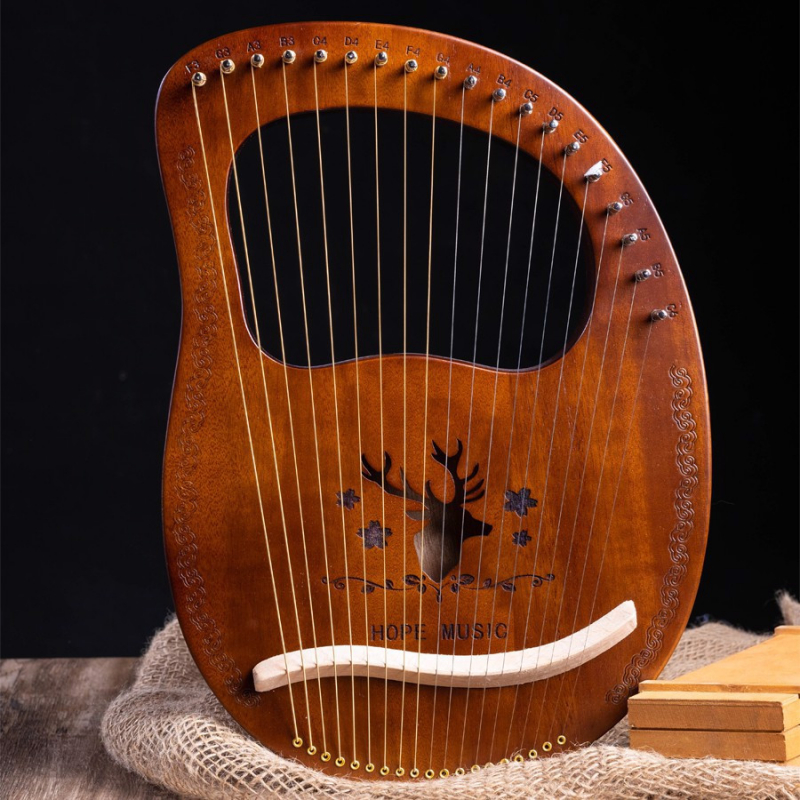Lyre
The lyre is possibly the antique instrument that is still most well-known to audiences in modern times. In ancient Greece, the stringed instrument was widely used. The lyre has even been cited as one of the instruments that best captures the traditional nature of Greece by certain experts. It was typically a key component of a student's musical education, much like the piano is now. An ancient musician would perform poetry readings or sing solos while playing the lyre.
The lyre's traditional shape consisted of two upright, immovable arms—occasionally horns—joined by a crossbar. A set of tuning pegs, which could be made of ivory, wood, bone, or bronze, would be used to tune the instrument. Seven strings, varying in thickness but usually, all the same, length, were stretched between the crossbar and a fixed bottom part. The strings were either manually pulled or with a plectrum by the musician.
The kithara, which had seven strings as well, the phorminx, which had four, and the tortoiseshell chess were all closely related stringed instruments. In fact, in various retellings of various myths, ancient scribes frequently used these four tools interchangeably.














